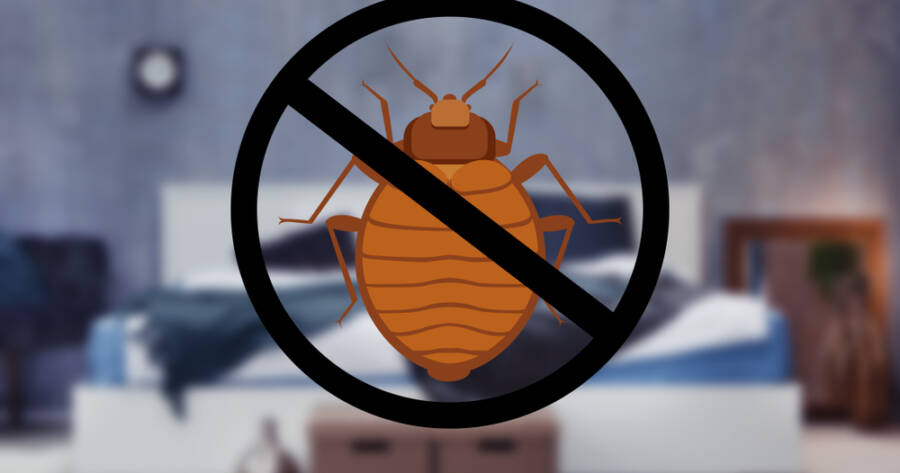Bed bugs are notorious for their resilience and ability to infest various spaces, causing physical discomfort and emotional distress. Successfully removing these unwelcome pests requires a comprehensive understanding of their biology, behavior, and effective treatment methods.
Signs of Bed Bugs
Detecting a bed bug infestation early is crucial for effective removal. Familiarize yourself with the signs of their presence, such as live insects, which are small, flat, and reddish-brown. These pests are about the size of an apple seed and tend to hide in cracks and crevices during the day, becoming more active at night when they emerge to feed.1 Spotting even a single bed bug can indicate a larger infestation, as these insects reproduce quickly and can spread throughout a home or building.
In addition to spotting live bed bugs, there are other telltale signs that can indicate an infestation. Keep an eye out for tiny white eggs, which are about the size of a pinhead and often found in hidden areas like mattress seams, bed frames, and furniture joints. Molted skins are another indicator, as bed bugs shed their exoskeletons several times as they mature.
Contain the Infestation
Once you’ve confirmed the presence of bed bugs, it’s essential to take immediate and thorough steps to contain the infestation and prevent it from spreading further. Bed bugs are notorious for their ability to quickly spread from one area to another, so acting swiftly is crucial.
Start by isolating the infested area to minimize the movement of bed bugs. Avoid moving infested furniture or belongings to other parts of your home, as this can easily spread the bugs. Seal infested items such as clothing, bedding, and personal belongings in tightly sealed plastic bags before moving them. This prevents bed bugs from escaping and spreading to other areas.
Clearing Clutter: Reducing Hiding Places
Bed bugs thrive in cluttered environments, which provide ample hiding places. By reducing clutter in your home, you can limit their ability to hide and reproduce. An organized, clutter-free space makes it significantly more challenging for bed bugs to establish themselves, as they have fewer places to conceal themselves during the day and lay their eggs.
Start by disposing of unnecessary items, especially those that have been sitting around unused for a while, as they can become prime hiding spots for bed bugs. Consider donating or recycling old clothes, magazines, and other items that tend to accumulate and serve no immediate purpose. Organizing your belongings is equally important; use storage bins with tight-fitting lids to keep items off the floor and limit potential hiding places.
Thorough Cleaning: Vacuuming and Steam Cleaning
A thorough cleaning regimen is vital for successful bed bug removal. Vacuum all areas where bed bugs may be hiding, focusing on seams, crevices, and carpet edges.
Additionally, steam cleaning can provide an extra layer of defense. High-temperature steam penetrates surfaces, killing bed bugs without the use of chemicals. Combining vacuuming and steam cleaning can significantly reduce the bed bug population in your home.
Targeted Treatments: Chemical and Non-Chemical Options
There are several targeted treatment options available for bed bug removal. Chemical treatments, such as insecticides containing pyrethroids or neonicotinoids, can be effective when applied according to the manufacturer’s instructions.2
However, some bed bugs may be resistant to certain chemicals, so it’s important to consider non-chemical alternatives as well. Options include diatomaceous earth, a natural powder that dehydrates and kills bed bugs, and heat treatments, which can be applied to infested items or entire rooms.
Professional Help: When to Call in the Experts
Throughout the bed bug removal process, it’s important to monitor your progress to ensure that treatments are effective. Regularly inspect your home for signs of bed bugs and use bed bug traps or monitors to help assess the remaining population. If you’re not seeing significant improvement, it may be time to adjust your strategy or consult a professional.
A professional pest control expert has access to specialized equipment, advanced knowledge, and experience, which can help ensure a more efficient and thorough removal process. They can also provide tailored recommendations for your specific situation, increasing your chances of success.
Restore Your Pest-Free Environment
Successful bed bug removal requires a comprehensive approach that includes early detection, containment, thorough cleaning, targeted treatments, and ongoing monitoring. Don’t hesitate to seek professional help if needed, and focus on prevention to ensure your home remains bed bug-free.
Armed with knowledge, you can exterminate bed bugs with these treatments. By effectively tackling bed bug infestations, you can maintain a comfortable and pest-free living environment.
